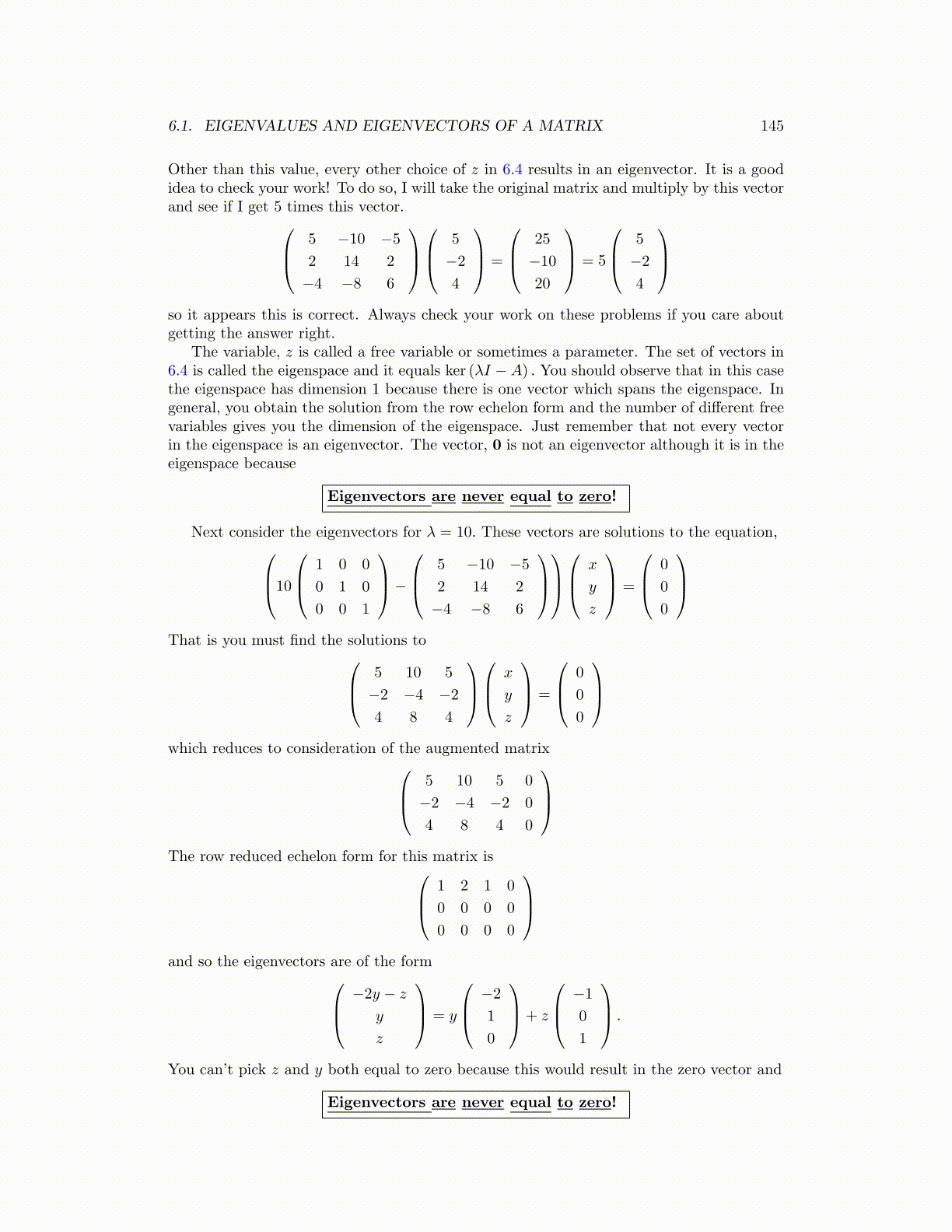
6.1. EIGENVALUES AND EIGENVECTORS OF A MATRIX 145
Other than this value, every other choice of z in 6.4 results in an eigenvector. It is a goodidea to check your work! To do so, I will take the original matrix and multiply by this vectorand see if I get 5 times this vector. 5 −10 −5
2 14 2
−4 −8 6
5
−2
4
=
25
−10
20
= 5
5
−2
4
so it appears this is correct. Always check your work on these problems if you care aboutgetting the answer right.
The variable, z is called a free variable or sometimes a parameter. The set of vectors in6.4 is called the eigenspace and it equals ker (λI −A) . You should observe that in this casethe eigenspace has dimension 1 because there is one vector which spans the eigenspace. Ingeneral, you obtain the solution from the row echelon form and the number of different freevariables gives you the dimension of the eigenspace. Just remember that not every vectorin the eigenspace is an eigenvector. The vector, 0 is not an eigenvector although it is in theeigenspace because
Eigenvectors are never equal to zero!
Next consider the eigenvectors for λ = 10. These vectors are solutions to the equation,10
1 0 0
0 1 0
0 0 1
−
5 −10 −5
2 14 2
−4 −8 6
x
y
z
=
0
0
0
That is you must find the solutions to 5 10 5
−2 −4 −2
4 8 4
x
y
z
=
0
0
0
which reduces to consideration of the augmented matrix 5 10 5 0
−2 −4 −2 0
4 8 4 0
The row reduced echelon form for this matrix is 1 2 1 0
0 0 0 0
0 0 0 0
and so the eigenvectors are of the form −2y − z
y
z
= y
−2
1
0
+ z
−1
0
1
.
You can’t pick z and y both equal to zero because this would result in the zero vector and
Eigenvectors are never equal to zero!